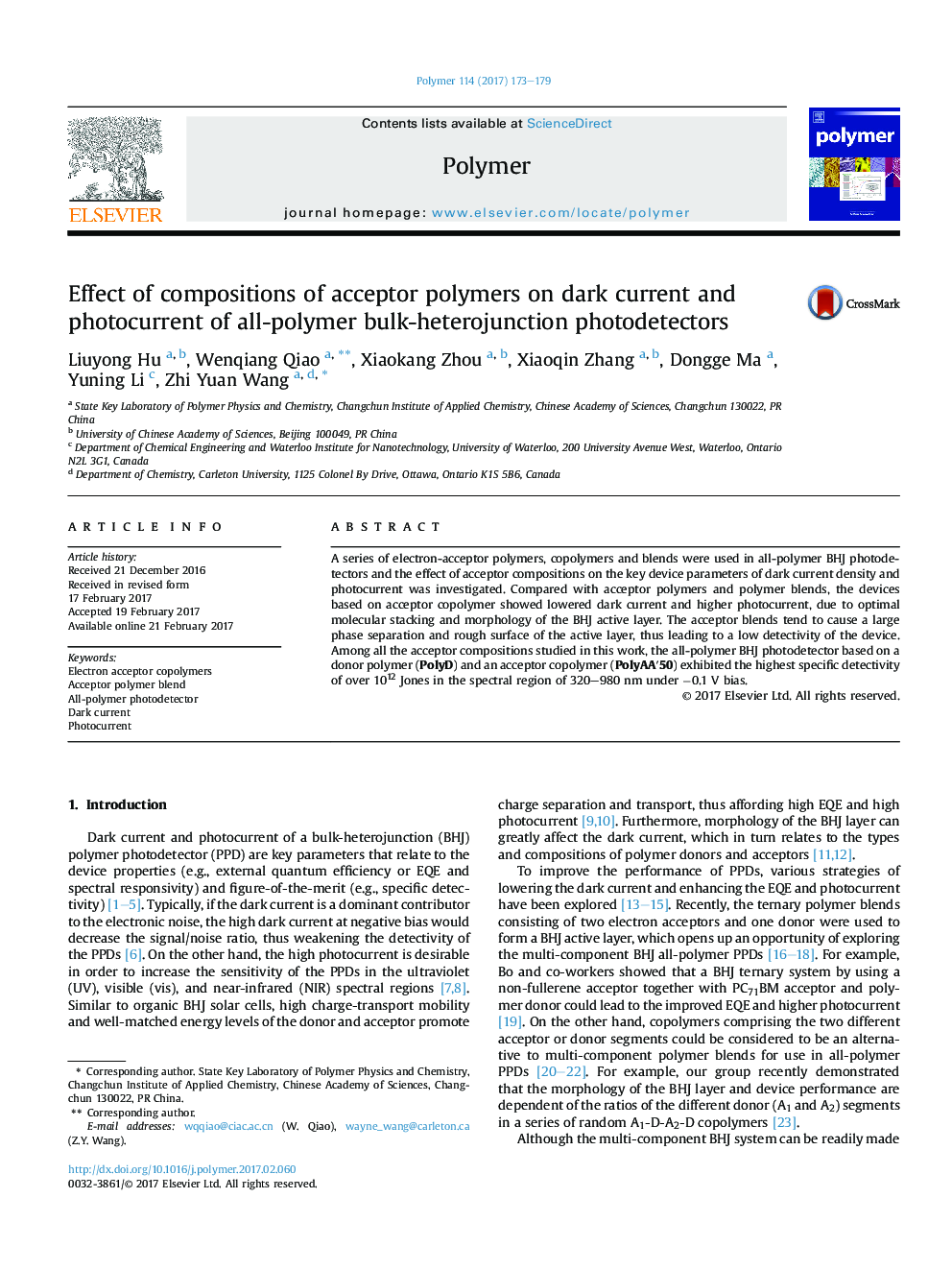| Article ID | Journal | Published Year | Pages | File Type |
|---|---|---|---|---|
| 5178273 | Polymer | 2017 | 7 Pages |
â¢We study the effect of compositions of acceptors on dark current and photocurrent.â¢We revealed that compositions of acceptors affect morphology of the BHJ layer, which in turns affects device performance.â¢The photodetector based on PolyD and PolyAAâ²50 exhibited D* of over 1012 Jones in 320-980 nm under â0.1 V bias.
A series of electron-acceptor polymers, copolymers and blends were used in all-polymer BHJ photodetectors and the effect of acceptor compositions on the key device parameters of dark current density and photocurrent was investigated. Compared with acceptor polymers and polymer blends, the devices based on acceptor copolymer showed lowered dark current and higher photocurrent, due to optimal molecular stacking and morphology of the BHJ active layer. The acceptor blends tend to cause a large phase separation and rough surface of the active layer, thus leading to a low detectivity of the device. Among all the acceptor compositions studied in this work, the all-polymer BHJ photodetector based on a donor polymer (PolyD) and an acceptor copolymer (PolyAAâ²50) exhibited the highest specific detectivity of over 1012 Jones in the spectral region of 320-980 nm under â0.1 V bias.
Graphical abstractTuning the compositions of acceptor polymers to achieve high performance of all-polymer photodetector.Download high-res image (194KB)Download full-size image
